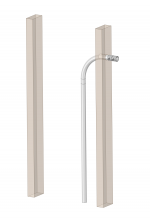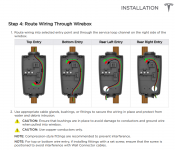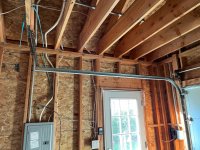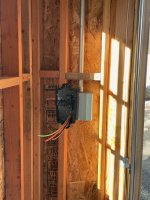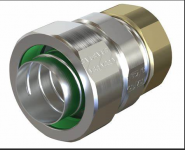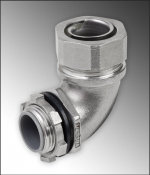Thanks for everyone's helpful advice so far.
Does anyone know any electricians in the Essex County, New Jersey area who would be willing and capable of running conduit through studs? If so, please can you send a direct message to me with the contact details?
The electricians I've spoken to so far don't seem willing and confident about being able to do this. One electrician told me that if he were to use 90 degree conduit couplings (to make the turns required to follow the path from the electrical panel around the top of the side door and then down) then every 90 degree coupling would need to remain accessible through the sheetrock. He say that code requires this. Is this correct?
He said that the code requirement for accessibility doesn't apply if the pipe is bent using a pipe bending tool, but he doesn't think that there is enough space to be able to make the bends and avoid 90 degree elbow couplings (the studs are spaced 16" on center).
If couplings are necessary and need to remain accessible, how is this requirement typically achieved? Is an electrical box installed at each 90 degree turn and is a hole left in the sheet rock for each box?

